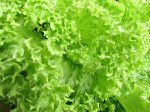Blossom drop – A sure sign of stress in hydroponic greenhouses
Blossom drop Symptoms
Blossom drop (flower buds abscise) occurs prior to anthesis under stress conditions. The early indications of blossom drop are the yellowing of the swollen area which joins the flower to its stem. After the flower has fallen or abscised, a small dried out stub is left over. Which is quite disheartening since there could have been a fruit.
Blossom drop causes
Any type of stress will induce blossom drop to occur. Stress can be induced by excessive temperatures, high nitrogen concentrations, pest and disease influences. To low or high humidity have also been known to cause blossom drop, especially in greenhouses with poor ventilation. Low light conditions can also cause blossom drop but these condition apply more to Europe than in Africa. Day temperatures above 34°C and night temperatures above 22°C and below 10°C can also cause blossom drop. The following factors cause the failure of the reproductive system:
- A reduction in pollen quantity and quality
- The degeneration of the ovule
- Malformation of flower development
- Induced deficiency of carbohydrates
- Imbalances in the creation of growth regulating substances
Controlling blossom drop
There is very little a grower can do to control the temperature and humidity outside. However, the temperatures and humidity can be controlled to a certain extent inside a greenhouse if it is properly planned and ventilated. Good fertilizer management will also help in reducing blossom drop.



